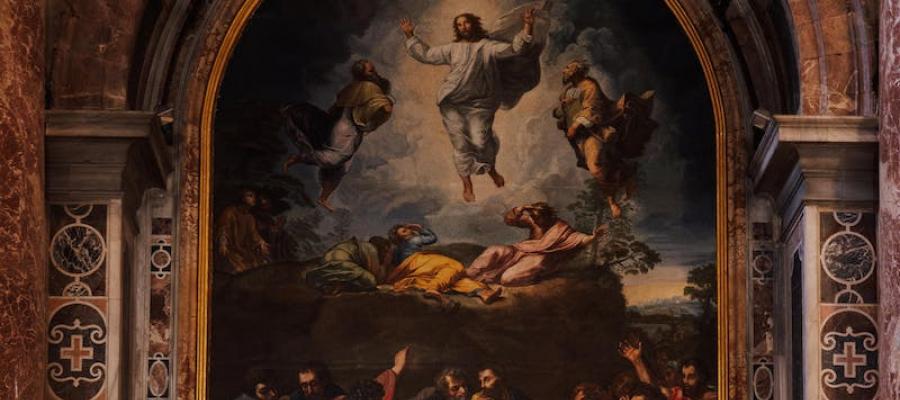
Looking Beyond the Surface
by Father Brian J. Soliven on Sunday February 25, 2024
To unlock the power of Lent, we need one thing—love. Love gives us the superpower to peer beyond the mere superficial. Take the prime example of bride and groom on their wedding day. Notice how they look at one another. As stunning as the flowing dresses may be or dapperly the suits, the real drama takes place on their faces. Their eyes are locked on each other in immortal affection. The miniscule muscles around the mouth tremble loftily. The rest of the body freezes in warmth, as the heart palpitates blood a thousand times over. Bride and groom stand before one another, face to face, dazed by mystery. Staring at one another at the colossal of moments, they see something entirely different then you and I. We see our friends, our sister or brother, our daughter or son, our cousin of distant relation or whatever the connection may be. The groom and bride however, recognize that the one who stands before them is so much more. Love has the power to penetrate the surface of reality, manifesting another entirely sweet dimension.
“Who do you say that I am?” Jesus asked this question to his disciples in Matthew 16:13-16. Or put it another way, he asked them what do you see when you look at me? Other people answered sheepishly: “Some say John the Baptist, others Elijah; and still others say Jeremiah or one of the prophets.” This anemic answer is stuck on the surface. But notice the response of Peter in this pivotal flash. Through a unique gift of grace, God granted him the transformative vision of love. He exclaimed, “You are the Messiah, the Son of the living God.” Peter went deep, blazing past the mere appearance of Jesus as he stood there in all his normalcy and saw the hidden divine truth—the man in front of him was more than a man. Just like a bride on her special day, the man standing before her is more than a man, and she is more than just a woman to him.
With all that said, what do you see when you stare at the Eucharist? Through all appearances, your senses tell you one thing. The eyes see bread and your palette tells you the same. The wine still tastes and smells like fermented grapes. Yet, the words of Jesus in the infamous Gospel of John, chapter six, haunts us, methodically and scandalously. “This is hard; who can accept it?” they said, when Jesus commanded them that his “flesh is true food and his blood his true drink.” If they want eternal life, they must gnaw on him. This was simply too much for many of those who followed Jesus. The majority of the people abandoned him here. They “saw” Jesus and balked. Turning to the remaining few who lingered, he asked them the question that love dreads to ask, “Do you also want to leave?” For love to be authentic love, it must be given freely and accepted without coercion or force. Jesus gives them the option to stay or flee, to return to life as the status quo and go back to the surface. Peter now, with eyes enraptured in love replies, “Master, to whom shall we go? You have the words of eternal life, we have come to believe and are convinced that you are the Holy One of God.” Peter saw love. Peter saw Jesus in the Eucharist. The saints see Jesus giving every ounce of his love to go after the lost sheep. What do you see?







